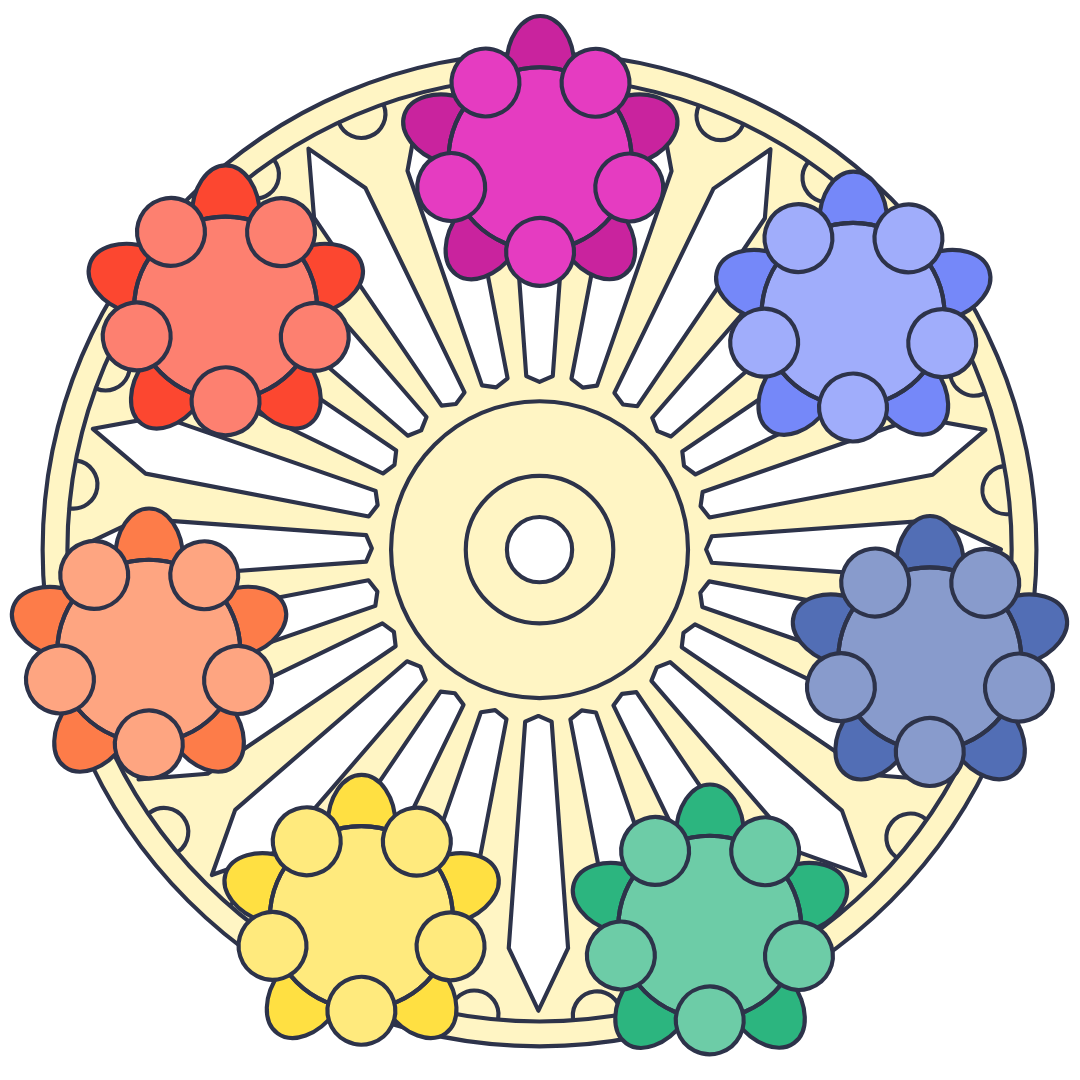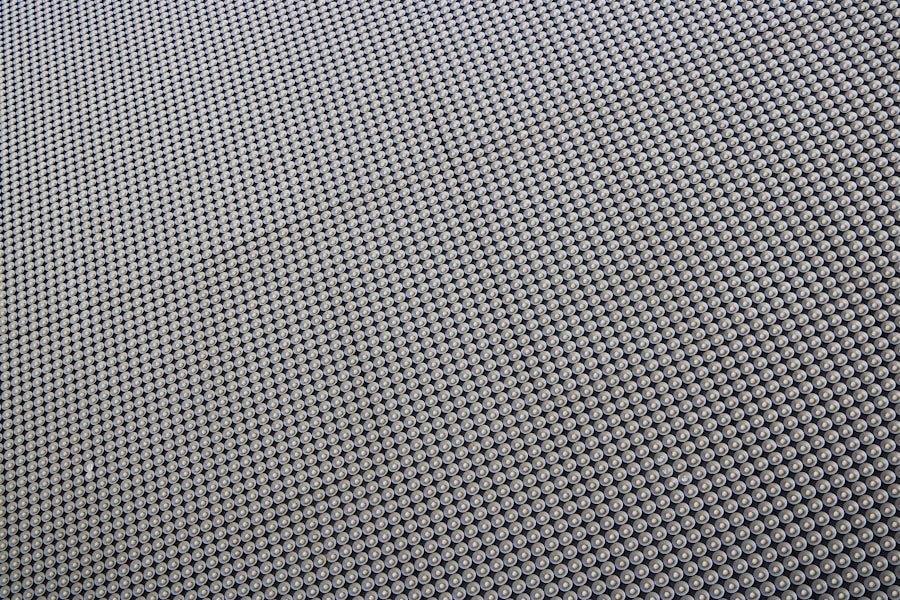Circular design principles are based on the concept of using circular shapes, patterns, and elements in the design of a website. This design approach is rooted in the idea of creating a more harmonious and balanced visual experience for users. By incorporating circular elements, designers can create a sense of flow and movement that can guide the user’s eye through the website in a more natural and intuitive way. Additionally, circular design principles can help to create a more cohesive and unified visual identity for a website, as circular shapes and patterns can be used to tie together different elements and sections of the site.
One of the key principles of circular design is the idea of creating a sense of continuity and interconnectedness throughout the website. This can be achieved by using circular shapes and patterns to create visual links between different sections of the site, or by using circular elements to create a sense of rhythm and repetition that can help to guide the user through the site. Another important principle of circular design is the idea of creating a sense of balance and harmony in the overall visual composition of the website. By using circular shapes and patterns in a thoughtful and intentional way, designers can create a more visually pleasing and engaging experience for users.
Choosing the Right Tools and Platforms
When it comes to implementing circular design principles in a website, choosing the right tools and platforms is crucial. There are a variety of design tools and platforms available that can help designers to create websites with circular elements, but not all of them are created equal. It’s important to choose tools and platforms that offer the flexibility and customization options needed to bring circular design principles to life.
One popular platform for implementing circular design is Adobe XD, which offers a range of features and tools specifically designed for creating websites with circular elements. With Adobe XD, designers can easily create and manipulate circular shapes, patterns, and elements, and can also take advantage of advanced prototyping and animation features to bring their circular design concepts to life. Another popular tool for implementing circular design is Figma, which offers a range of collaborative design features that make it easy for teams to work together on creating websites with circular elements. Figma also offers a range of plugins and integrations that can help designers to streamline their workflow and bring their circular design concepts to life more efficiently.
Planning Your Website Layout with Circular Design
When planning a website layout with circular design principles in mind, it’s important to consider how circular elements can be used to create a more cohesive and visually engaging experience for users. One approach to planning a website layout with circular design is to use circular shapes and patterns to create visual links between different sections of the site. For example, designers can use circular elements to create visual pathways that guide the user’s eye through the site in a more natural and intuitive way.
Another approach to planning a website layout with circular design is to use circular elements to create a sense of rhythm and repetition that can help to guide the user through the site. By using circular shapes and patterns in a thoughtful and intentional way, designers can create a more visually pleasing and engaging experience for users. Additionally, when planning a website layout with circular design, it’s important to consider how different types of content and media can be integrated into the overall visual composition of the site. By using circular elements to frame and showcase different types of content, designers can create a more cohesive and unified visual identity for the website.
Incorporating Circular Elements in Your Website’s Visuals
Incorporating circular elements in your website’s visuals is an important aspect of implementing circular design principles. There are a variety of ways that designers can incorporate circular elements into the visual composition of a website, from using circular shapes and patterns as decorative elements, to using circular elements to frame and showcase different types of content. One approach to incorporating circular elements in your website’s visuals is to use circular shapes and patterns as decorative elements that can help to create a more visually engaging and dynamic experience for users.
For example, designers can use circular shapes as background elements or as decorative accents that help to create a sense of rhythm and movement throughout the site. Another approach to incorporating circular elements in your website’s visuals is to use circular elements to frame and showcase different types of content. For example, designers can use circular shapes as frames for images or videos, or can use circular patterns as background elements that help to draw attention to specific pieces of content. By incorporating circular elements in these ways, designers can create a more cohesive and visually engaging experience for users.
Implementing Responsive and User-Friendly Navigation
When implementing circular design principles in a website, it’s important to consider how navigation can be made more responsive and user-friendly. One approach to implementing responsive and user-friendly navigation in a website with circular design is to use circular elements as interactive navigation buttons or menus. For example, designers can use circular shapes as buttons that users can click on to navigate between different sections of the site, or can use circular patterns as interactive menus that users can interact with to access different parts of the site.
Another approach to implementing responsive and user-friendly navigation in a website with circular design is to use circular elements as visual cues that help to guide the user through the site. For example, designers can use circular shapes and patterns as visual markers that help users to understand their position within the site, or can use circular elements as visual indicators that help users to understand how different sections of the site are related to each other. By implementing responsive and user-friendly navigation in these ways, designers can create a more intuitive and engaging experience for users.
Testing and Refining Your Circular Design Website
Once a website with circular design has been created, it’s important to test and refine the design to ensure that it meets the needs and expectations of users. One approach to testing and refining a circular design website is to conduct usability testing with real users. By observing how real users interact with the website, designers can gain valuable insights into how well the circular design principles have been implemented, and can identify any areas where improvements may be needed.
Another approach to testing and refining a circular design website is to conduct A/B testing with different variations of the design. By comparing how users interact with different versions of the website, designers can gain valuable insights into which aspects of the design are most effective, and can identify any areas where improvements may be needed. Additionally, when testing and refining a circular design website, it’s important to consider how different devices and screen sizes may impact the user experience. By testing the website on different devices and screen sizes, designers can ensure that the circular design principles are being effectively implemented across all platforms.
Launching and Maintaining Your Circular Design Website
Once a circular design website has been tested and refined, it’s time to launch the site and begin maintaining it over time. When launching a circular design website, it’s important to consider how different marketing strategies can be used to promote the site and attract users. By leveraging social media, email marketing, and other digital marketing channels, designers can help to generate interest in the site and drive traffic to it.
Additionally, when maintaining a circular design website, it’s important to consider how ongoing updates and improvements can be made to keep the site fresh and engaging for users. By regularly updating content, adding new features, and making other improvements, designers can ensure that the site continues to meet the needs and expectations of users over time. Finally, when maintaining a circular design website, it’s important to consider how analytics can be used to track user behavior and identify areas where further improvements may be needed. By analyzing user data, designers can gain valuable insights into how well the site is performing, and can identify any areas where changes may be needed to improve the user experience.

